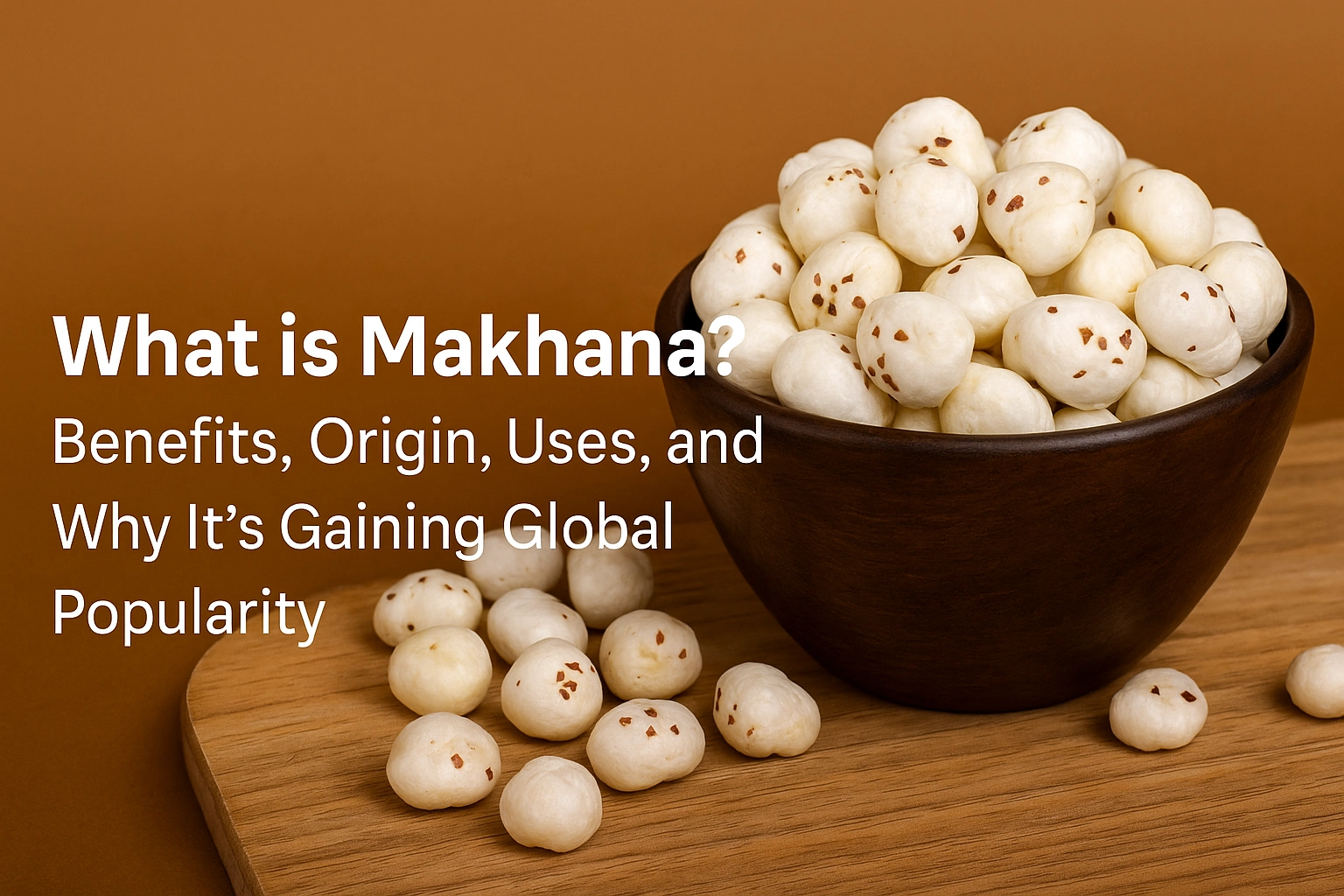What is makhana, and why is it trending in the international health community? Makhana, also known as fox nuts or lotus seeds, has been a part of Indian diets from centuries. Its rich nutritional profile and multitude of health benefits have made it a modern-day superfood in recent times. From Bihar to Beverly Hills, this unassuming seed is entering the world’s workout regimes and gourmet kitchens. We make sense of what makhana is made form, what it’s used for, and why it’s the latest must-have in the pantry of any health-conscious person.
What is Makhana and Where Does it Come From?
The question of what is makhana starts from where it comes from — the Euryale Ferox plant. Makhana is the popped seed of this aquatic plant that grows in the wetlands of Bihar. What is the English name for Foxnuts? There are also known as fox nut or gorgon nut. Part of its priciness can be explained by the labor-intensive harvesting and popping process for the seed. Bihar accounts for more than 80% of the global supply, making it a superfood with a geographically specific influence. So, what is makhana in Bihar: It’s food, yes, but also tradition, livelihood, and heritage.
What is Makhana Made Of and Its Nutritional Value
While asking the question of what is makhana made of, it is necessary to check out the impressive nutritional composition of this substance. Makhana is 85% carbohydrates, 9% protein (8–9 grams in 100 grams of Foxnuts) and 2% fat (0.1–0.3 grams in 100 grams of Foxnuts) along with minerals like magnesium, potassium, phosphorus etc. A study by the Indian Council of Medical Research states that makhana contains natural antioxidants like kaempferol, which helps in combating inflammation and aging. It’s low in cholesterol and sodium as well and is gluten-free, making it perfect for those who have dietary restrictions. So, what is makhana food? It is clean fuel for your body.
Health Benefits That Make Makhana a Superfood
If not for boosting health, then what is makhana used for? Makhana has been linked to better digestion, blood sugar control, and weight loss. It is also a good option for diabetics due to its low glycemic index. Another case study in 2021 in Delhi NCR concluding that regular consumption of Foxnuts as a snack reduced LDL cholesterol significantly in 12 weeks. Rich in fiber, antioxidants, it also promotes heart and skin health. For anyone curious why is makhana good — it’s good for just about everything wellness-they have.
Traditional and Modern Culinary Uses of Makhana
As wondering What is makhana used for in kitchens? It is typically found in Indian recipes such as makhana curry and roasted snacks. But its modern applications are wideninglike make that Foxnuts granola, trail mix or even vegan cheese dips. Its neutral flavor and light texture make it an easy backdrop for flavors. In the U.S., health brands now sell it as “popped water lily seeds.” Is makhana available in USA? It is often marketed as lotus seeds or fox nuts — names meant to entice Western buyers while maintaining the exotic brand.
Why is Makhana So Expensive and In Demand?
What is makhana, but a high-value, traditional effort? The price of Makhana often shocks new buyers. Unlike machine-processed snacks, Foxnuts is still hand-harvested and popped — a process that includes sun-drying and extreme heat. The high nutritional value of it along with the labor-heavy process contributes to the high price. In 2022 overall market data, health trends and fitness influencers that have led to a 32% increase in global demand for makhana. That’s why makhana is so expensive, and so sought after.

